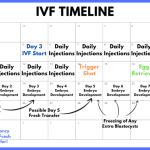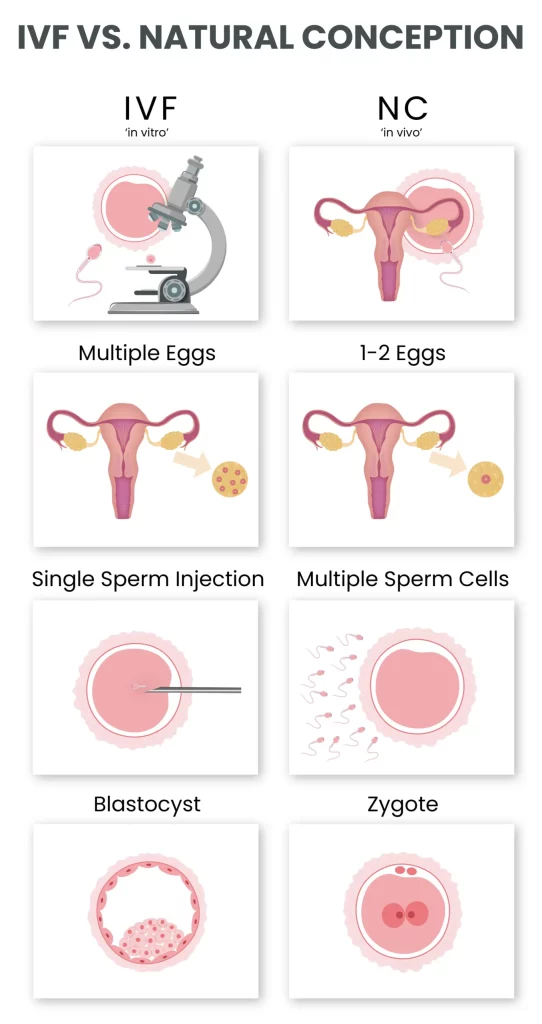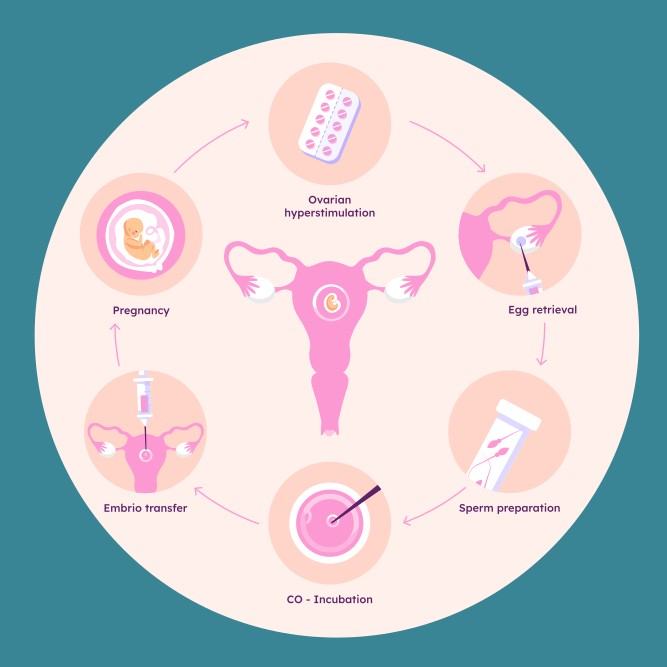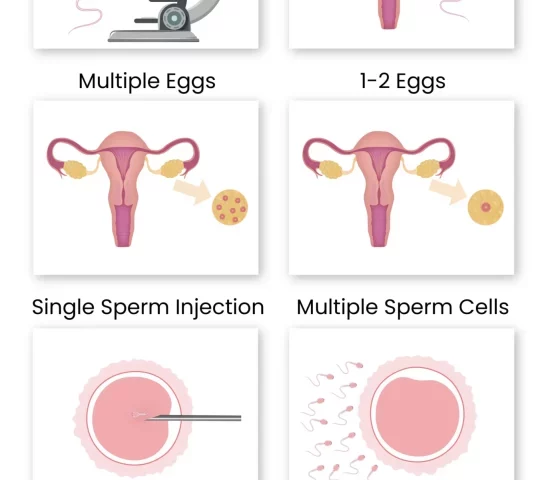
The IVF Egg Retrieval Process and Birth Control Pills: What You Didn’t Know
April 22, 2025The IVF Fertilization Process: Everything You Need to Know and More
Imagine you’re on a journey to start a family, but the road feels a little bumpy. Maybe you’ve heard about IVF—in vitro fertilization—and wondered, What’s it really like? It’s not just a medical procedure; it’s a deeply personal experience filled with hope, science, and a few surprises along the way. Whether you’re curious about how it works, what it feels like, or those little details no one talks about, this guide is for you. We’re diving deep into the IVF fertilization process—way beyond the basics—to give you a full picture, packed with practical tips, the latest research, and some hidden gems that’ll make you feel like an insider.

What Is IVF? A Simple Breakdown
IVF is like a helping hand for people who want to have a baby but can’t conceive naturally. It’s a process where doctors take an egg and sperm, combine them in a lab (not inside the body!), and then place the resulting embryo back into the uterus to grow. Sounds straightforward, right? But there’s so much more to it—both the science and the emotions—that makes IVF a wild ride.
Why People Choose IVF
- Struggles with infertility: Blocked tubes, low sperm count, or conditions like PCOS (polycystic ovary syndrome) can make natural conception tricky.
- Same-sex couples or single parents: IVF opens doors for building families in unique ways.
- Age factors: As women get older, egg quality drops, and IVF can help bridge that gap.
Fun fact: Did you know IVF isn’t just for humans? Farmers use it to breed prize-winning cows! But for us, it’s all about creating tiny humans—and it’s been doing that since 1978 when the first IVF baby, Louise Brown, was born.
How Does the IVF Fertilization Process Work? Step-by-Step
The IVF process isn’t a one-day thing—it’s a series of steps that can take weeks or even months. Here’s how it unfolds, with some juicy details you won’t find everywhere.
Step 1: Boosting Your Eggs (Ovarian Stimulation)
Your body usually releases one egg a month, but IVF needs more to increase the odds. Doctors give you hormone shots—think of them as egg superchargers—for about 10-14 days.
- What it feels like: You might feel bloated, moody, or even a little like a superhero growing a team of eggs inside you.
- Little-known perk: Some women say they feel oddly proud of their ovaries working overtime—like they’re secretly training for the Egg Olympics!
- Science says: A 2023 study from the Journal of Fertility and Sterility found that tweaking hormone doses based on your age and weight can boost egg numbers by up to 15%.
Practical Tip: Keep a journal of how you feel each day. It helps you spot patterns and talk to your doctor if something’s off.
Step 2: Egg Retrieval (The Big Pickup)
Once your eggs are ready, a doctor uses a thin needle—guided by ultrasound—to collect them from your ovaries. You’re asleep for this, so no worries about feeling it.
- Behind the scenes: The eggs are sucked into a tube and handed to a lab expert who’s waiting to count them like treasure.
- Weird but true: Some clinics play music during retrieval to keep the team chill—imagine your eggs grooving to jazz!
- Risk check: There’s a tiny 1% chance of bleeding or infection, but it’s rare.
Checklist for Prep:
✔️ Eat light the night before—no heavy pizza!
✔️ Bring comfy socks for the cold clinic room.
❌ Don’t wear perfume—it can mess with the lab equipment.
Step 3: Sperm Collection (The Other Half)
While your eggs are being collected, your partner (or a donor) provides a sperm sample. If sperm quality’s low, doctors might use a fancy trick called ICSI (intracytoplasmic sperm injection), where they inject a single sperm right into an egg.
- Fun twist: Some guys say the18 nervous about giving the sample—like it’s a secret spy mission!
- Latest scoop: A 2024 study showed ICSI boosts success rates by 20% in tough cases.
Pro Tip: Freeze extra sperm ahead of time if you’re worried about “performance pressure.”
Step 4: Fertilization (The Magic Moment)
In the lab, eggs and sperm meet. Sometimes it’s old-school—mixing them in a dish—or high-tech with ICSI. Either way, it’s where life begins.
- What’s cool: Lab techs watch under a microscope as sperm wiggle toward the egg—it’s like a tiny action movie!
- Did you know?: About 60-70% of eggs fertilize successfully, per the American Society for Reproductive Medicine (ASRM).
Step 5: Embryo Growth (The Waiting Game)
Fertilized eggs become embryos and grow for 3-5 days. The lab team grades them—like giving report cards—based on how healthy they look.
- Secret detail: Some embryologists nickname top embryos “rockstars” because they’re so perfect.
- Research update: A 2025 trial from Human Reproduction suggests growing embryos to day 5 (blastocyst stage) ups pregnancy rates by 10% compared to day 3 transfers.
Quick Guide:
- Day 3: Embryos have 6-8 cells.
- Day 5: They’re blastocysts with 100+ cells—ready to roll!
Step 6: Embryo Transfer (The Homecoming)
A doctor slides a thin tube through your cervix to place one or two embryos in your uterus. It’s quick—no anesthesia needed—and you might feel mild cramps.
- Surprise: Some women swear they “felt” the embryo stick—like a little hug from the inside.
- Expert quote: “The transfer is the emotional peak for many patients,” says Dr. Jane Miller, a fertility specialist from Boston IVF.
Aftercare:
✔️ Rest for a day, but don’t overdo bed rest—studies show it doesn’t help.
❌ Skip heavy lifting or hot tubs for 48 hours.
Step 7: The Two-Week Wait (TWW)
Now you wait 10-14 days to take a pregnancy test. It’s the longest two weeks ever—full of hope and jitters.
- Fan fave: People knit, binge Netflix, or even talk to their embryos to pass the time!
- Science tip: A 2023 study found stress doesn’t ruin IVF odds, so try to relax.
What Makes IVF Success Rates Tick?
IVF isn’t a guaranteed win—it’s more like a roll of the dice. Success rates depend on a bunch of factors. Here’s the scoop.
Age Is a Big Deal
- Under 35: 40-50% chance per cycle (ASRM 2024 data).
- Over 40: Drops to 10-15%—tougher, but not impossible!
Table: Success by Age
| Age Group | Success Rate |
|---|---|
| <35 | 45% |
| 35-37 | 38% |
| 38-40 | 25% |
| >40 | 12% |
Embryo Quality Matters
Top-grade embryos have a 50% higher shot at working than lower-grade ones. Think of it like picking the ripest fruit.
Lifestyle Hacks
- Smoking: Cuts success by 30%—quit now!
- Weight: Being too thin or too heavy can lower odds by 20%, per a 2024 Fertility Research study.
Action Plan:
✔️ Eat a rainbow—fruits, veggies, lean protein.
✔️ Sleep 7-8 hours to balance hormones.
❌ Ditch the nightly wine—it’s not your friend here.
The Emotional Rollercoaster of IVF
IVF isn’t just needles and labs—it’s a heart thing too. Here’s what it’s really like.
The Highs
- Hearing “We got 10 eggs!” feels like winning the lottery.
- Seeing two lines on a test after years of waiting? Pure magic.
The Lows
- A failed cycle stings—like a breakup you didn’t see coming.
- Hormones can turn you into a weepy mess over a puppy commercial.
Real Talk: One mom told me she kept a “hope jar”—dropping in a coin for every good moment. By the end, it paid for her baby’s first outfit.
Coping Tips:
✔️ Join an IVF support group—online or IRL.
✔️ Try yoga or meditation—studies show it cuts stress by 25%.
Costs and Cash-Saving Tricks
IVF isn’t cheap—think $12,000-$20,000 per cycle in the U.S. But there are ways to soften the blow.
What’s Included?
- Meds: $3,000-$5,000 (those shots add up!).
- Procedures: $8,000-$12,000.
- Extras: Genetic testing or freezing embryos tacks on $2,000-$5,000.
Money-Saving Hacks
- Mini-IVF: Uses fewer drugs, costs $5,000-$7,000. A 2024 study says it’s just as good for some women.
- Grants: Groups like Baby Quest offer up to $15,000—apply early!
- Insurance: Only 19 states mandate coverage—check yours.
Expert Insight: “Shop around—clinic prices vary wildly,” advises Dr. Sarah Thompson, a reproductive endocrinologist in Chicago.
Weird IVF Side Effects No One Mentions
Hormones and procedures bring quirks you won’t see in pamphlets.
- Night sweats: You might wake up soaked—like puberty 2.0.
- Food cravings: Pickles and ice cream aren’t just for pregnancy!
- Bruises: Injection sites can look like a polka-dot party.
Fixes:
✔️ Use ice before shots to numb the sting.
✔️ Stock up on cozy PJs for sweaty nights.
Latest IVF Research: What’s New in 2025?
Science keeps pushing IVF forward. Here’s what’s hot.
AI in the Lab
- AI tools now pick the best embryos with 90% accuracy, up from 70% in 2020 (Nature Medicine, 2025).
- Cuts guesswork, boosts odds.
Time-Lapse Imaging
- Cameras watch embryos 24/7, spotting winners without disturbing them. A 2024 trial showed a 12% bump in success.
Mitochondrial Boost
- Adding “energy packets” to older eggs is in testing—early results hint at a 15% lift for women over 40.
IVF Myths Busted
Let’s clear up some nonsense floating around.
Myth 1: IVF Babies Are “Different”
- Nope! They’re as healthy as naturally conceived kids, per a 2023 Pediatrics study.
Myth 2: It’s Only for Rich People
- Not true—grants, loans, and cheaper options like mini-IVF make it doable.
Myth 3: You’ll Have Octuplets
- Rare! Most transfers are 1-2 embryos—multiples are down 60% since 2000.
Prepping for IVF: Your Game Plan
Want to rock your IVF cycle? Here’s how to stack the deck.
Before You Start
- Check your levels: Blood tests for AMH (egg reserve) and FSH (ovary function) set the stage.
- Detox: Cut caffeine to 1 cup a day—too much messes with eggs.
During the Process
- Hydrate: Drink 8-10 glasses of water daily—keeps things flowing.
- Partner up: Sync schedules with your spouse or donor for sperm day.
After Transfer
- Chill out: Skip the gym, but take short walks—keeps blood moving without overdoing it.
- Test smart: Wait 12 days post-transfer for an accurate result.
IVF Around the World
IVF isn’t the same everywhere—here’s a peek.
- U.S.: Pricey but cutting-edge—top clinics boast 50% success rates.
- Europe: Cheaper (e.g., Spain at $6,000/cycle), but waitlists can stretch months.
- Asia: Places like India offer $3,000 cycles—quality varies, so research hard.
Travel Tip: Some fly abroad for IVF “vacations”—treatment plus a beach break!
Frozen Embryos: The Cool Option
Not ready for a baby yet? Freeze those embryos!
How It Works
- Embryos are flash-frozen in liquid nitrogen—stays good for 10+ years.
- Success rates match fresh transfers (45% per cycle, ASRM 2024).
Why People Love It
- Saves time—no repeat egg retrievals.
- Lets you space out kids—like hitting pause on your family plan.
Fun Fact: The oldest frozen embryo to make a baby was 27 years old—born in 2020!
Donor Eggs and Sperm: Another Path
If your eggs or sperm need a boost, donors can help.
Egg Donation
- Young donors (20s-30s) give eggs—success jumps to 55% per cycle.
- Costs $20,000-$30,000, but worth it for many.
Sperm Donation
- Banks screen for health and smarts—$1,000-$2,000 per cycle.
- Anonymous or known—you pick!
Real Story: One couple chose a donor who loved hiking—like them—and now their kid’s a trailblazer too.
IVF and Twins: Double Trouble?
Twins happen in 20-30% of IVF pregnancies—cute, but risky.
Why It Happens
- Two embryos up the odds—and the twin rate.
- Docs push single transfers now to cut risks.
Pros and Cons
✔️ Instant family—two for one!
❌ Higher chance of preterm birth—35% vs. 10% for singletons.
Expert Take: “Single embryo transfer is the future—it’s safer,” says Dr. Mark Evans, a fertility guru from California.

When IVF Doesn’t Work: Next Steps
Not every cycle ends in a baby—40-50% don’t. What then?
Try Again
- Adjust meds or timing—second tries often work (60% cumulative success by cycle 3).
Switch Gears
- Donor options: Eggs, sperm, or embryos can flip the script.
- Surrogacy: Another womb carries your baby—costs $80,000+ but 70% successful.
Take a Break
- Rest, grieve, then regroup—mental health matters.
IVF and Your Body: Long-Term Effects
Does IVF mess you up later? Not really.
- Fertility: Stays the same—IVF doesn’t “use up” eggs faster.
- Cancer: No solid link to breast or ovarian cancer, per a 2024 Lancet review.
- Menopause: Hits at the usual time—IVF doesn’t speed it up.
Feel-Good News: Most women bounce back within months—physically and emotionally.
The IVF Community: You’re Not Alone
IVF folks are a tight-knit crew—online and off.
Where to Connect
- Reddit: r/infertility is raw and real—thousands share daily.
- Instagram: Hashtags like #IVFjourney show off belly bumps and hope jars.
- Local groups: Clinics often host meetups—coffee and tears included.
Hidden Gem: Some knit “IVF blankets” during the TWW—cozy and symbolic!
Your IVF Questions Answered
Got Qs? Here’s what fans ask most.
Does It Hurt?
- Shots pinch, retrieval’s a breeze (you’re out), transfer’s like a Pap smear—mild cramps at worst.
How Long Does It Take?
- One cycle’s 4-6 weeks—egg to transfer. Add 2 weeks for the test.
Can I Exercise?
- Light stuff like yoga’s fine—skip marathons ‘til after the TWW.
Let’s Talk: Your IVF Story
IVF’s a big deal—and we want to hear about it! Drop a comment below:
- What’s your fave IVF hack?
- Got a weird side effect to share?
- How do you survive the two-week wait?
Or shoot us a question—we’ll dig into it for you. You’re part of this journey, and your voice makes it richer!
